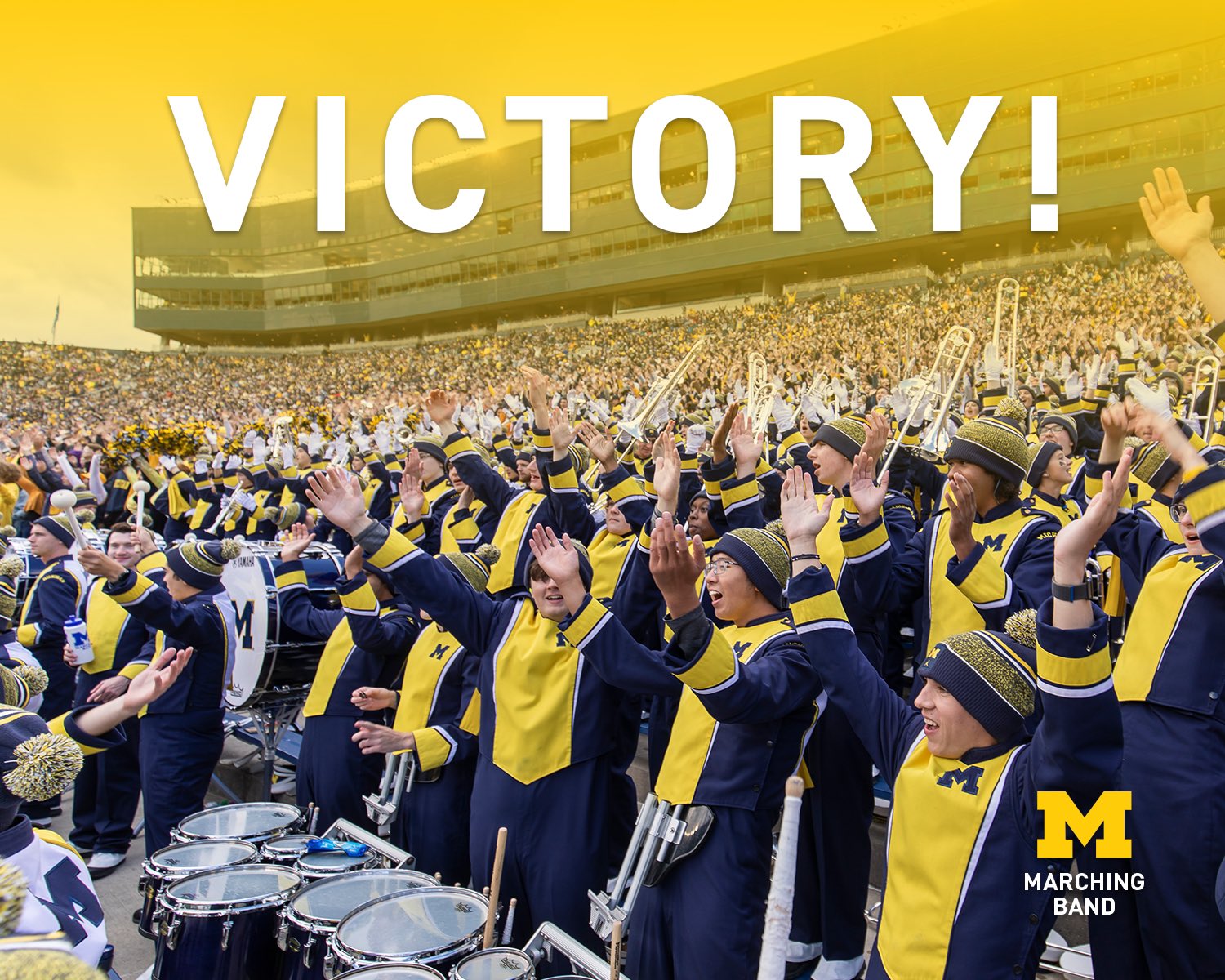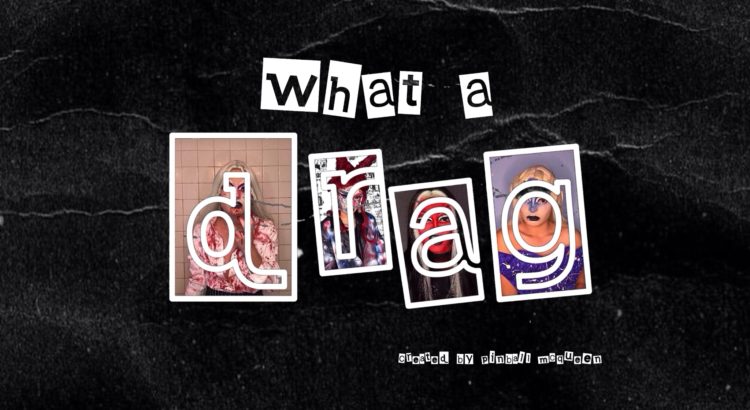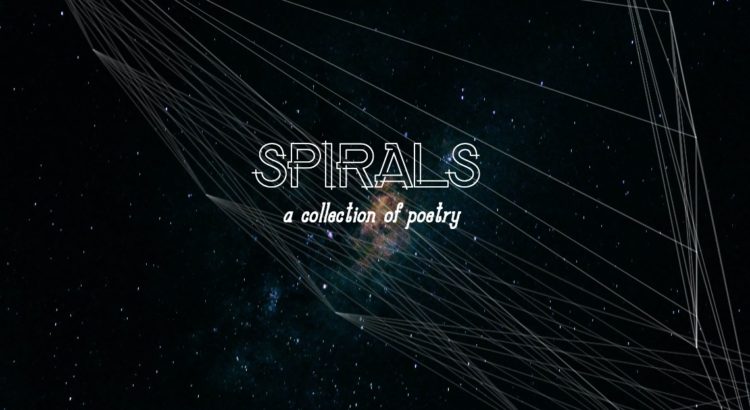
Tag: Fall 2021 Reading List

The Rise of the Band Geeks, Episode 8: 42-27
In light of our resounding victory against That Team Down South, your local band geek would be remiss not to write about The Game from the perspective of the Michigan Marching Band.
I’m just going to preface this with a simple yet eloquent statement: WE CRUSHED THEM, BABY!!!!!! YEEHAAAAAAWWWW!!!!!! ONLY ONE FOOTBALL TEAM IS GOING TO THE CHAMPIONSHIP, AND IT’S NOT THAT TEAM DOWN SOUTH! (As you can see, I’m still basking in the glory that comes from defeating Public Enemy #1.)
5:00 am. Yes, really–we arose at 5 am in the shadow of the waning night to get fired up for the day we had all been waiting for. Bundled up in multiple layers with our garment bags in tow,

we traversed the distance from our dwellings to the sanctified building known as Revelli Hall. For all the hype that coiled through the frigid atmosphere, the uncertainty of what lay ahead–namely, the expectation that we were going to lose–crouched in the backs of our minds for the most part.
We all wanted to win, of course. But being a Michigan fan, as we all know, means preparing for the worst during The Game. Were we going to be subjected to abysmal ref calls? Succumb to a walloping by That Team Down South (TTDS) for the ninth game in a row? Or were we finally going to show TTDS who was boss?
Pregame. In all my time as a marching band member (so basically just this season), I have never heard the fans be so loud. This was easily the rowdiest the student section has ever been. And when the band took the field doing entries? Utter chaos.
It was cheering for the most part, though there were spurts of intense booing that were audible with and without foam earplugs.
Truly, it was magical.
The First Half. Cold. Cold. Cooooooooooooooold. Where I’m from, temperatures do not dip this low for such extended periods during which we must be outside. Compared to the eager snow and vengeful wind, the sweater weather that dominated October was a tropical paradise. Lukewarm handwarmers, semi-numb fingertips, and–hang on a second–
WE GOT THE FIRST TOUCHDOWN OF THE GAME.
The rest of the first half unfolded as a true nail-biter (or glove-biter, if you were fortunate enough to have gloves). The holy band beanies were indeed a saving grace against the winter weather (it’s still fall, right? RIGHT!?!?!?!?!?!?)…until the time came for the halftime performance.

Halftime. Arguably the most crucial part of The Game other than the victory, the halftime performance provided heat where the weather did not. The dusting of snow revealed the tracks of marchers as we went through our drill, our breaths almost as visible as the bull’s ferocious puff at the end of the first song.
By the very end, my fingers were numb and I was in physical pain, but retrospectively it was awesome. And playing El Toro Caliente evidently worked, because the weather was less miserable during the third quarter.
The Second Half: Where it All Went Down. With each touchdown, each stands cheer, the tenuous hope we’d clung to throughout the first half gradually solidified. Was this really happening? Were we finally going to dominate TTDS?
I didn’t let my excitement carry me away until the fourth quarter. When the score was 28-20, I knew The Game could easily be tied with a TD and a two-point conversion, which has been a sore sport for the Wolverines this season (read: we’ve missed it every time, and the other teams seemingly snuck past our defense to score. Yes, I’m looking at you, Sparty).
Then, in the fourth quarter, it happened: the cymbal rank leader called Cheer 8.
The drumline calls a series of cheers throughout the game, each in a different context. Drum cheers are similar to stand tunes other than the fact that only the drumline plays. Cheer 8 is reserved for moments when we are definitively beating the other team and involves a dance that includes the whip, so its being called was a watershed. All of a sudden, the possibility of victory felt real.
When Haskins scored the sixth touchdown, we knew. The final minutes were those of surreal anticipation and chaotic thrills as the seconds ticked toward zero–
And then the football team rushed the field.

Triumph. Elation. Screaming brazenly as our lord and savior Carl Grapentine announced the final score to thousands of victorious Michigan fans. A fervent rendition of “The Victors” exploding from our instruments as fans began to storm the field. I sensed going into the season that the field would be stormed if we won The Game, but it was a mere fantasy, a wishful hope the dream of smashing TTDS would finally come true.
As my overjoyed hollering joined the ecstatic roars of thousands, the cold evaporated into a storm of maize and blue.
Aftermath. …for about ten minutes. Then, we had to wait for quite literally thousands of fans to clear the field. (Also, it was snowing again.) The field, when we did finally set foot onto it, was littered with detritus: primarily maize pom-poms, although I did spot a shot-sized bottle of Fireball whiskey.
The MMB celebrates wins by wearing our shakos backwards from the conclusion of our postgame performance to the moment we enter Revelli after cadencing there. Flipping around my shako as I had done for all the home games this season felt differently than before. It felt magical, incredible, fantastic. It also felt unstable because my chinstrap was not adjusted accordingly, and I was too dang cold to bother adjusting it. Perched as it was atop my beanie (with help from my hand holding it in place), my backwards shako bore the victory as I marched along the pavement with a giddy smile stretched across my face.
Although the regular season is over, the band/football season and this blog are far from finished! Tune in next week for more band-related hubbub.

Women in Drag
As an AFAB drag artist, one of the most prominent criticisms and questions I get is “How can women do drag?” And many people who are new to drag (or people who may have outdated views on drag) may wonder the same thing. Isn’t drag about female impersonation? Aren’t drag artists crossdressers? How can women be drag queens if they already have the hair and wear makeup? Where’s the transformation sis??

While mainstream media that promotes drag may have ignored women and afab people in drag forever (looking at you Drag Race), women have been drag artists and drag queens as long as drag has been around. This year we’ve started seeing women in drag getting recognition finally, even if it’s practically decades late. Both Drag Race UK and Dragula, the two most prominent drag-focused TV shows, featured cis women in their casts with Victoria Scone and Sigourney Beaver. Drag Race All-Stars also crowned Kylie Sonique Love the first trans woman winner of a Drag Race season.

But even as women in drag are getting more attention, they have to deal with far more misogyny than one would expect from a predominantly queer and supposedly accepting fanbase. So let’s set the record straight:
- Women in drag are Not encroaching on LGBT spaces. Surprisingly, women can be gay too! Both Sigourney and Victoria have been open about being lesbians, and Venus Envy, another cis woman in drag, is open queer and asexual. BUT drag artists don’t have to be queer! Drag is for anyone!
- Drag is not just female impersonation or crossdressing. Women in drag are doing drag! Many of them pad, they all wear wigs, paint on completely new faces, and often do more to transform than cis men in drag (looking at you Joey Jay).
- The terms hyper-queen and bio queen are outdated and insulting! While these terms have been used to discuss women in drag in the past, most drag queens don’t associate or use them anymore. Women who are drag queens are drag queens. Same as any other queen!
- Women in drag are fucking incredible. They are some of the most innovative artists ever (I mean, look at Sigourney’s run on Dragula. COME ON!)
So support women in drag! And if you’re looking for some women in drag to support, consider this (non-exhaustive) list to start!
Creme Fatale (@cremefatale)

Sigourney Beaver (@sigourney.beaver)

Victoria Scone (@victoriascone)

Venus Envy (@venusenvydrag)


Art Biz with Liz: A Time of Reopening
It’s been over a year since I’ve been to an in-person concert or performance (besides my own for Grand Night for Singing). While I’m not very well-versed when it comes to classical musical, I’m ecstatic to be seeing the Ann Arbor Symphony Orchestra at Hill Auditorium tonight. I don’t know much about Pictures at an Exhibition, but the A2 Symphony describes it as a 10-piece suite “originally composed for piano in 1874.”
Thinking about the concert tonight, I can’t help but reflect on how the pandemic has affected the arts. It still wows me when I consider the changes that have taken place to keep the arts alive. Prior to the pandemic, I never considered how a concert or other live event might have to navigate public health advice or consult with public health professionals to get the okay to go on. It’s interesting to think about the way some venues have even connected with a team of public health professionals to get advice on reopening strategies. While COVID-19 is an ongoing concern, groups have implemented policies to keep people safe. The Ann Arbor Symphony Orchestra, for example, requires proof of vaccination or a negative test.
Whether live or online, people in the arts have to be resilient. Early on, theaters and art galleries shut down in efforts to mitigate the spread. At the same time, people need the arts to survive dark times. They give us meaning, expression, and a sense of community. For many, the arts help us form connections to family, friends, and strangers around the world. Creativity is one of the key things that has sustained us throughout the pandemic. With means of livelihood threatened, there was no other option for some artists and groups but to adapt quickly to new circumstances. Museum collections moved online, collective concerts were put together, and art classes sent people materials for crafting at home. Artists bonded together, concentrating on their artistic visions and goals just as much as survival.
Moving forward, the unexpected will continue to happen. It’s important for people in the arts to be transparent when it does, which means communicating new information promptly to artists, donors, or the public. Even before the pandemic, I was impressed by the communication and camaraderie of many arts organizations with their staff and public. Throughout the pandemic, these factors have been even more valuable. There’s a mutually beneficial relationship between patrons and artists, and it was tested during a period where everything else fell apart. Sustaining this relationship, which endured even a pandemic, will be key to the arts’ continued success. If there’s one thing I’ve learned, it’s the importance of community support in giving vitality to the arts.
I’m glad to be supporting the arts tonight, and I look forward to be back in Hill Auditorium. We bought tickets before we knew the concert would appear in Passport to the Arts, but if you’re strapped for cash and would love to attend tonight’s concert, you’ll be delighted to find it in this week’s Passport to the Arts. Have a great weekend, everyone!

TOLAROIDS: Fallin’ for the campus!
There is simply no way I would start a photography blog at UMich without posting any photos of the campus during the fall season. I think I will make it a theme for a few of the future posts as we grasp the last moments of fall before the cold comes. This week’s series is simple though: it’s just a daily walk through the campus that we all have in our schedules but sometimes don’t get to appreciate the beauty of.
*Don’t worry, the Arb will get its own appreciation post 😉
If you want to tell me which place is your favorite or have any other comments, thoughts, or questions you can contact me here or at @akilian.jpg on Instagram!
– Tola

NEW STORY: My Name is Minette, Chapter One: Minette Is Being Driven Mad
(Hi, readers! This next story is still fantasy, but set in Ye Olden Times. I am turning this story into my Senior Honors Thesis, and hope to publish it as a full-length book. I hope you enjoy! Sincerely, Theo.)
MINETTE did not have a bad life.
No, it was quite the opposite: she had a roof and four walls, a loving family, delicious meals, and a stable future laid out for her.
It was the little particularities that made it all so unbearable for her; the secrets she carried with her that she could not reveal on pain of death, the lies that built up and up and up.
She loved her family, she honestly did. She loved Maw’s crass jokes, how reliable and true Paw was. Her brother Rhys had a gentle heart, an irremovable sweetness, and a quick wit; Irma, her sister, was strong. Strong and spirited. Irma was born blind, and now, as a wiry twelve-year old, she was a loud talker, a fast runner, and a quick learner. Irma had a bright future ahead of her.
Even their homestead felt like a member of the family to Minette: the thatched roof, the sun-bleached boards on the walls, the little hallway upstairs with the circle window that spilled glittering dust motes in the late afternoon sun. The rug in the kitchen that was so worn down Minette couldn’t remember what the pattern or even the color used to be. The house groaned and creaked, but in a reliable way, in a way that spoke of the generations upon generations of lives that had been lived here.
And Minette did not want to be one of them.
You see, despite all the cuddly warmth of her little family and the reliability of the old house, Minette could not speak. Minette could not move. She couldn’t even breathe.
Every day, her family called her Morton, or, even worse, Morty.
They talked about her with free lease, completely unaware of how it bothered her: our Morton is so strong! He’s built like an ox! He’ll manage the smithy just fine one day!
Minette hated it all to the point of madness. She felt like a perpetual actor, forced to read lines from a script, lines that were so wrong, so different from her reality. And the worst part was that her family, her whole world, they only knew the character, not the actor, and they loved him. They couldn’t tell the role didn’t fit. Minette didn’t think they would love her the same as him.
No one ever seemed to notice the fact that Minette was always onstage and in costume. Minette supposed that it was a good thing that her family never noticed anything wrong, never questioned her. If they did, she had absolutely no idea what she would say. She wouldn’t even know where to begin.













